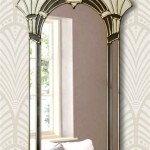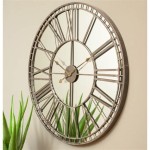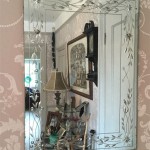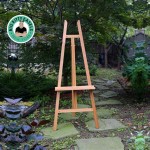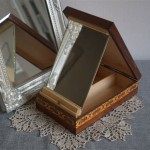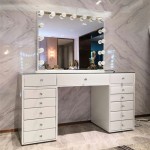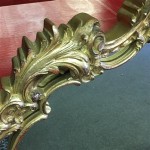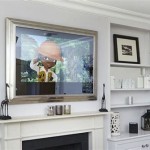How To Remove Ceiling or Floor Mirrors From Wall
Mirrored walls, once a popular design trend, can sometimes become undesirable or require removal for renovation purposes. Removing ceiling or floor mirrors adhered to a wall requires careful execution to prevent damage to the drywall, the mirrors themselves, and, most importantly, the individual performing the task. This article provides a comprehensive guide to safely and effectively removing these types of mirrors, focusing on the necessary tools, preparation steps, and techniques for minimizing potential risks.
The key to a successful mirror removal project lies in understanding the adhesive used. Often, construction adhesive is employed, which creates a very strong bond between the mirror and the wall. Simply pulling on the mirror is highly likely to result in shattered glass and significant drywall damage. Instead, a combination of techniques, aimed at weakening the adhesive and carefully prying the mirror away, is recommended.
Preparing for Mirror Removal
Before commencing any removal process, proper preparation is essential. This involves gathering the necessary tools and taking precautions to protect both the work area and the individual performing the task. Neglecting these initial steps can lead to accidents and increased difficulty in the long run.
The essential tools include:
*Safety Glasses: Eye protection is paramount to prevent glass shards from entering the eyes.
*Work Gloves: These protect hands from cuts and abrasions during handling of the mirror.
*Painter's Tape: Used to secure the mirror and minimize splintering if breakage occurs.
*Putty Knife or Scraper: Several sizes may be needed to effectively work behind the mirror.
*Piano Wire or Strong Wire: This is used to cut through the adhesive behind the mirror.
*Hammer: Needed to gently tap the putty knife or scraper. Use with extreme caution.
*Pry Bar (Small): Provides leverage for separating the mirror from the wall, but should be used very carefully to avoid damaging the wall.
*Shims (Wooden or Plastic): Used to create a small gap between the mirror and the wall as the adhesive is loosened.
*Solvent (e.g., Mineral Spirits or Adhesive Remover): Helps to dissolve some types of adhesive. Test a small, inconspicuous area first to ensure it doesn't damage the wall.
*Drop Cloth or Protective Sheeting: Covers the floor to protect it from falling debris and adhesive.
*Respirator or Dust Mask: Protects against dust and particulate matter released during the removal process.
*Heavy-Duty Trash Bags or Containers: For disposing of broken glass and adhesive residue.
The work area should be prepared by covering the floor with drop cloths to protect it from falling debris. Ensure adequate ventilation in the room. If the mirror is large, having an assistant will significantly improve safety and control during the removal process.
Before starting, carefully inspect the edges of the mirror. Look for any gaps or areas where the adhesive might be weaker. These areas can be targeted first when beginning the prying process. Also, assess the type of wall the mirror is attached to. Drywall is more susceptible to damage than plaster and requires extra caution.
Techniques for Loosening the Adhesive
The primary goal is to weaken the bond between the mirror and the wall without shattering the glass or causing excessive damage to the drywall. Several techniques can be employed, often in combination, to achieve this goal. Patience and careful execution are paramount.
Applying Painter's Tape: Before commencing any prying, cover the entire surface of the mirror with painter's tape in a grid pattern. This will help hold the glass fragments together if the mirror cracks or breaks during the removal process. The tape also provides a degree of protection against splintering.
Using a Putty Knife and Hammer: Start by gently inserting a putty knife or scraper between the mirror and the wall at one of the corners. Tap the handle of the putty knife lightly with a hammer to try and work the blade further behind the mirror. Avoid using excessive force, as this can easily crack the mirror or damage the drywall. The objective is to slowly separate the adhesive bond. If the putty knife encounters significant resistance, try a different location or technique.
Utilizing Piano Wire or Strong Wire: This technique involves using a length of strong wire, such as piano wire, to "cut" through the adhesive. Carefully work the wire behind the mirror, using a sawing motion. This method is particularly effective for mirrors attached with a continuous bead of adhesive. This method can take time but is less likely to damage the wall than simply prying the mirror off.
Employing Shims: As the adhesive is loosened, insert small wooden or plastic shims into the gap created between the mirror and the wall. This will help maintain the separation and prevent the mirror from re-adhering. Gradually increase the number and thickness of the shims as you work your way around the mirror.
Applying Solvent: In some cases, a solvent, such as mineral spirits or a commercially available adhesive remover, can be used to help dissolve the adhesive. Apply the solvent to the edges of the mirror, allowing it to seep behind the glass. Be sure to test the solvent on an inconspicuous area of the wall first to ensure it doesn't damage the paint or wall covering. Note that solvents may not be effective against all types of adhesives.
Heat Application (Use with Extreme Caution): A heat gun can be used to soften the adhesive, but this method requires extreme caution to avoid overheating the glass and causing it to shatter. Use a low heat setting and keep the heat gun moving. Avoid concentrating the heat on any one spot for too long. Proceed slowly and carefully, testing the adhesion frequently.
Prying with a Pry Bar (Use with Extreme Caution): As a last resort, a small pry bar can be used to carefully pry the mirror away from the wall. However, this method carries a high risk of damaging the drywall. Use a wide, flat pry bar and insert it behind the mirror in an area where the adhesive has already been partially loosened. Apply gentle pressure and work slowly, using shims to maintain the separation. Avoid using excessive force, as this will likely result in significant damage.
Removing the Mirror and Addressing Adhesive Residue
Once the adhesive has been sufficiently loosened, the mirror should be carefully removed from the wall. If the mirror is large, it is essential to have an assistant to help support the weight and prevent it from falling. Even with careful execution, there's a strong possibility the mirror will break during removal, hence the necessity of safety precautions and applying painter's tape beforehand.
With all the above methods, it is important to work slowly and patiently. Rushing the process is likely to result in broken glass and damaged walls.
Controlled Removal: If the mirror is intact or largely intact, carefully lift it away from the wall, supporting it from the bottom. Lower it slowly onto a padded surface or have your assistant help carry it away for disposal.
Dealing with Broken Pieces: If the mirror breaks during the removal process, carefully collect the broken pieces and dispose of them properly in heavy-duty trash bags or containers. Wear gloves to protect your hands from cuts.
After the mirror has been removed, adhesive residue will likely remain on the wall. Several methods can be used to remove this residue:
*Scraping: Use a putty knife or scraper to carefully scrape away the bulk of the adhesive. Be careful not to gouge or damage the drywall.
*Solvent Application: Apply a solvent, such as mineral spirits or adhesive remover, to the remaining residue. Allow the solvent to soak for a few minutes to soften the adhesive, then scrape it away with a putty knife.
*Heat Application (Again, Use with Extreme Caution): A heat gun can be used to soften the adhesive, making it easier to scrape away. As before, use a low heat setting and keep the heat gun moving. Be careful not to overheat the drywall, as this can cause it to crumble.
*Sanding: Once the bulk of the adhesive has been removed, sanding the wall can help smooth out any remaining residue. Use a fine-grit sandpaper and sand lightly to avoid damaging the drywall.
Once the adhesive residue has been removed, the wall will likely require patching and painting to repair any damage caused during the removal process. Use drywall compound to fill any holes or gouges, and then sand the patched areas smooth. Prime the patched areas and then paint them to match the surrounding wall. Depending on the extent of the damage, it may be necessary to re-texture the wall before painting.
Removing ceiling or floor mirrors from a wall is a challenging task that requires careful planning, the right tools, and a methodical approach. By following the steps outlined in this guide, it is possible to safely and effectively remove these mirrors while minimizing damage to the wall. If the task seems too daunting, consider hiring a professional contractor to handle the removal.

Diy Project Removing Floor To Ceiling Mirrors From A Wall In Our House S Dining Room Jeff Geerling

Diy Project Removing Floor To Ceiling Mirrors From A Wall In Our House S Dining Room Jeff Geerling

Diy Project Removing Floor To Ceiling Mirrors From A Wall In Our House S Dining Room

How To Remove Mirror Off The Wall Safe Easy

How To Safely Remove A Floor Ceiling Mirror Today S Homeowner

How To Remove A Bathroom Mirror Lowe S

How To Remove A Large Mirror That S Glued The Wall Emerging Home

How To Remove A Large Mirror That S Glued The Wall Emerging Home

How To Hang A Wall Of Mirrors The Handyman

Ped With Dated Mirrored Walls 5 Design Ideas To Make Them Work Apartment Therapy
